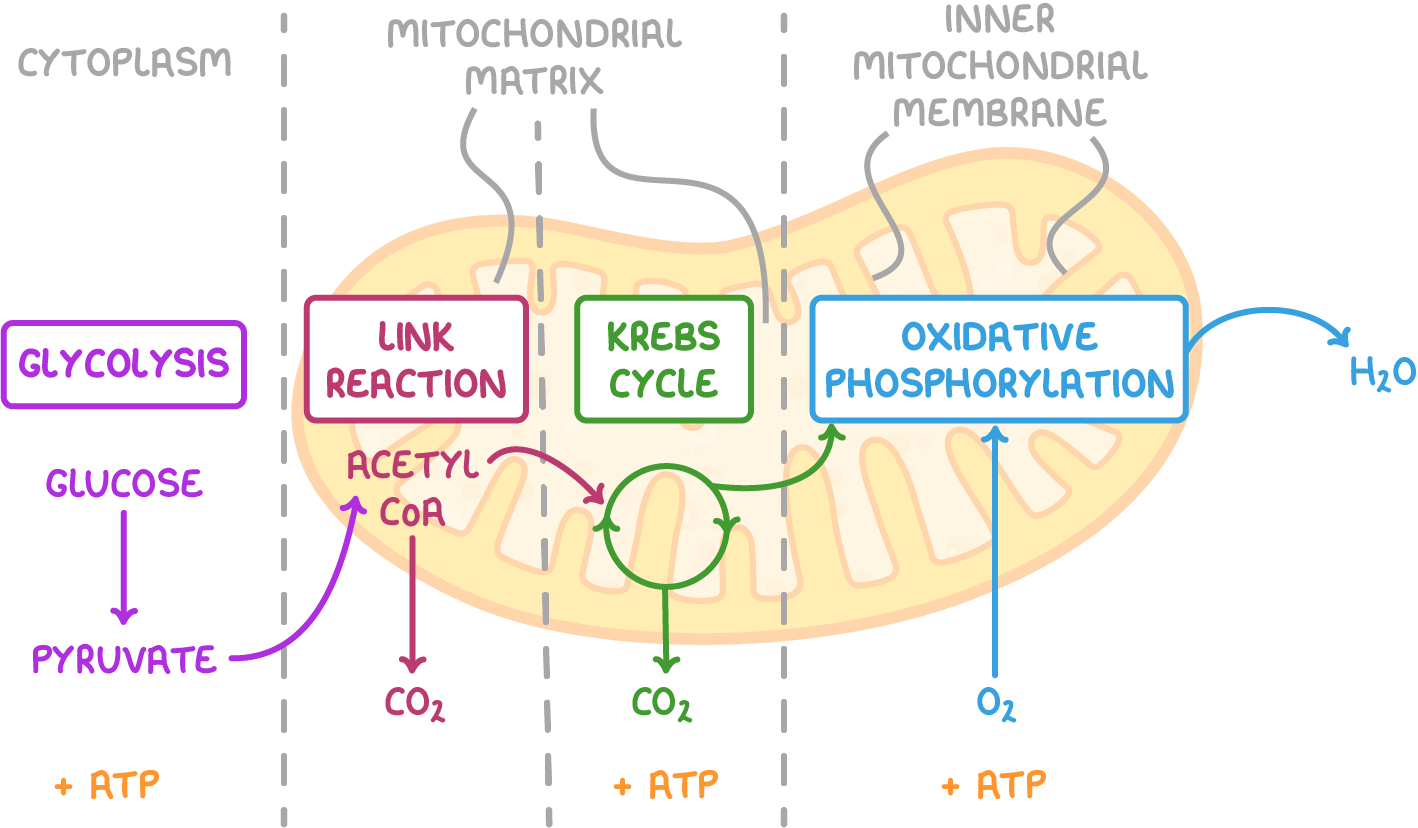Introduction to Respiration
This lesson covers:
- The role of respiration in synthesising ATP
- Aerobic and anaerobic respiration
- The four stages of aerobic respiration
The role of respiration in synthesising ATP
ATP acts as a universal energy currency, providing the energy required for various cellular processes. ATP is made when Pi is combined with ADP, using energy released in respiration.
The formation of ATP is an example of an anabolic reaction. This is a chemical reaction in which small molecules are built up into larger ones, using an input of energy.
Cells must continuously regenerate ATP during respiration through:
- Substrate-level phosphorylation - Direct transfer of a phosphate group from a donor molecule to ADP.
- Chemiosmosis - Using the movement of protons across a membrane to drive ATP synthesis.
Substrate-level phosphorylation is an example of a substrate-linked reaction. This is when ATP is made using energy provided directly by another chemical reaction.
Aerobic and anaerobic respiration
Respiration is the enzymatic release of energy from organic compounds in living cells. The energy stored in ATP, which is the primary energy carrier in all living organisms, is originally derived from the sun.
Through photosynthesis, plants and other photosynthetic organisms convert light energy into chemical energy stored in organic molecules. These molecules are then used in respiration to generate ATP.
There are two types of cellular respiration:
- Aerobic respiration - This requires oxygen.
- Anaerobic respiration - This does not require oxygen.
The four stages of aerobic cellular respiration
Human ATP production primarily occurs through glucose metabolism in aerobic cellular respiration.
Aerobic cellular respiration has four distinct stages.

| Stage | Location | Main process | Main products |
|---|---|---|---|
| 1. Glycolysis | Cytoplasm | Breakdown of glucose into pyruvate molecules | Per glucose molecule: 2 ATP, 2 reduced NAD, 2 pyruvate |
| 2. The link reaction | Mitochondrial matrix | Conversion of pyruvate into acetyl CoA | Per pyruvate molecule: 1 acetyl CoA, 1 reduced NAD, 1 CO2 |
| 3. The Krebs cycle | Mitochondrial matrix | Series of reactions starting with acetyl CoA | Per acetyl CoA molecule: 1 ATP, 3 reduced NAD, 1 reduced FAD, 2 CO2 |
| 4. Oxidative phosphorylation (electron transport chain) | Inner mitochondrial membrane | Transfer of electrons through proteins, creating a proton gradient that allows the synthesis of ATP | Approximately 30 ATP, water |
While glucose is the primary fuel, other respiratory substrates such as fatty acids and amino acids can also be used in respiration. Oxygen is essential for aerobic respiration. This is why breathing is vital, as it supplies oxygen for ATP synthesis.